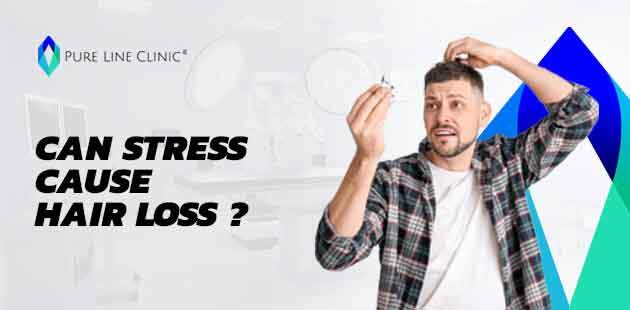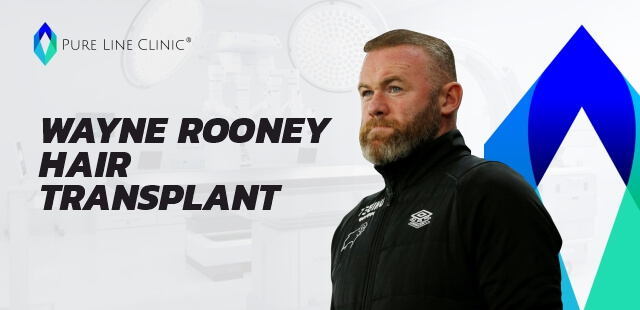
Does Finasteride Regrow Hair ?
People who have problems with thinning and baldness in their hair strands resort to various hair removal methods such as hair transplants. However, before applying for a hair transplant, patients may apply some treatment methods. In this context, there have been claims in recent years that finasteride causes hair growth.
Finasteride is an antiandrogen. It is known as a DHT blocker. It is the main ingredient of a drug sold in pharmacies as Propecia. The purpose of introducing the drug to the market is for use in the treatment of prostate cancer. However, due to its effect on the hair, it has also been used for the treatment of hair loss. Although finasteride is used in the treatment of hair loss, there are controversial ideas regarding finasteride today.
Experts emphasize that finasteride does not have any effect on baldness. It does not have the feature of providing hair follicle formation from the areas where hair follicles are lost. However, in case thinning of the hair strands, thickens the strands and makes the hair appear thicker.
While experts recommend finasteride for hair strengthening, studies published on finasteride in recent years have revealed that the drug has various side effects. This situation divided the doctors into two. While some doctors continue to recommend finasteride to their patients, others have started to resort to alternative methods.
What is the Effect of Finasteride on Hair Roots?
Testosterone is converted into dihydrotestosterone in the body. Dihydrotestosterone (DHT) causes hair loss. The purpose of finasteride is to inhibit the production of the 5 alpha-reductase types two enzymes, which are effective in the conversion of testosterone to dihydrotestosterone. Slowing down hair loss has effects on the strengthening of the existing hair follicles and the strengthening of the hair structure. It is not a treatment method that can be applied to the existing baldness problem. It does not have an effect such as providing the regeneration of lost hair follicles. However, it is a drug prescribed by doctors for the treatment of hair loss for years.
Finasteride treatment is administered at 1 milligram per day. It can be applied to individuals aged 18 and over. It has a long-term treatment procedure. For long-term inhibition of DHT, the drug should be used for at least 1 year. In this way, it is ensured that the existing hair is sufficiently strengthened.
Some physicians recommend using the drug for up to 5 years for a more lasting effect. However, the current side effects of the drug raise doubts about the 5-year duration. If the drug is not used during the required period, the hair structure of the people returns to its pre-treatment state depending on the incomplete treatment.
When Does Finasteride Take Effect?
Finasteride treatment is a long-term treatment. This drug, which should be used under the control of a doctor, begins to take effect between 3 and 6 months. Since it is a long-term drug, suspicions about its side effects of the drug have increased. In recent years, with the increase in the number of complaints about finasteride, research on its side effects has also increased. Side effects such as the tendency to depression, problems experienced in sexual matters, and anxiety attacks have started to raise concerns about finasteride.
Are There Any Side Effects of Finasteride?
It is stated in the package insert of drugs containing finasteride that they can only cause temporary sexual side effects. However, studies on finasteride have proven that finasteride has stronger side effects than claimed. Symptoms of decreased orgasmic ability, breast enlargement, pain during erection, decreased libido, and a tendency to depression have been observed in men taking finasteride. These side effects should be taken seriously, as it may take up to 10 years for the side effects to disappear after discontinuation of the drug.
How to Reduce the Side Effect of Finasteride?
Finasteride prevents the release of DHT used in the testosterone cycle. As a result, estrogen levels in men rise to 15%. The main reason behind the formation of sexual problems is the rising estrogen level. To reduce the side effects of finasteride, an intervention should be made primarily for estrogen levels. Aromatase inhibitors can be used, which will reduce estrogen levels with the doctor's control. Aromatase can be taken through medication, or it is possible to obtain aromatase from food. Aromatase inhibitors can be obtained from cruciferous vegetables, grape seed extract, and foods that are sources of zinc. Thanks to aromatase, the side effects of finasteride can be reduced more quickly.
Another method that can be applied to reduce the side effects of finasteride is to acquire behaviors that will increase libido. Regular exercise has a positive effect on libido by making the person feel more vigorous. You can also get support from libido-enhancing herbal supplements such as ginseng and Muira Pauma. Consumption of nitric oxide-rich foods also reduces the side effects of finasteride. Consumption of nitric oxide-rich foods such as spinach, beets, arugula, and lettuce are recommended foods for individuals using finasteride.
What Are the Alternative Treatments of Finasteride?
The side effects of finasteride may cause insecurity or a question mark in people's minds. Some doctors recommend using medication under control and continue using finasteride as long as no side effects are observed. Some doctors, on the other hand, apply medical aesthetic applications that nourish hair follicles such as mesotherapy. Thanks to the mesotherapy applications that have no side effects, the hair follicles are fed and the existing hair is healthier.
For people who want to continue using finasteride, it is recommended to use hair products enriched with finasteride, not the drug form. With the regular use of finasteride-rich shampoos, the hair follicles are nourished, making the hair stronger and more voluminous.
In case of baldness problems in people, hair transplant methods such as the FUE method are applied. FUE hair transplant treatment, which is a permanent hair treatment, gives people natural and voluminous hair. However, before applying the hair transplant method, a doctor's examination should be passed. Physicians who are experts in their fields decide during the examination whether the patients are suitable for hair transplant treatment.
Hair transplant specialists and doctors working within Pure Line Clinic ® provide services in professional teamwork. In the preliminary interview, examinations will be made for your hair health. If your health condition is suitable, finasteride treatment can be planned after consultation with your specialist. However, at this point, it should be known that expert control should be done. It is recommended that people using finasteride consult their expert regularly, as the possible side effects of the drug may cause adverse effects in daily life.
Pure Line Clinic ® provides the needed service with patient consultants both during and after the treatment. When you need to ask your expert a question after your treatment, you can easily access the answers to your questions. When a treatment other than medicine or medical aesthetic applications needs to be planned, Pure Line Clinic ® always help you with its professional services.
Permanent solutions to hair loss and baldness with the advanced FUE method are available at Pure Line Clinic ®. The FUE method is a method without side effects and can be applied to any adult woman and man whose general health profile is suitable for treatment. All treatment planning that may be needed for healthy and strong hair is waiting for you at Pure Line Clinic ®.

What is Icegraft Method ?
IceGraft hair transplantation method is a hair transplantation procedure wherein the cold application technique protects hair follicles.

African American Hair Transplant
How to get natural hair transplant results for African Americans by addressing unique hair characteristics, the benefits of FUE, and Pure Line Clinic’s specialists who are experts in customized plans to restore density and confidence.

Can You Wear a Hat After Hair Transplant?
Most of specialists will advise you to hold off wearing a hat or cap for at least ten days. Your transplanted grafts must root in the balding areas for 7–10 days.

Is It Possible to Regrow Hair on Bald Spots?
Have you recently spotted a bald spot on your head? Are you concerned that the spot will develop and cause you to go bald? Do you try to hide it with a typical comb-over? Do you want to know how to recover hair on a bald head?

Are You Looking For Free Hair Transplant Consultation Near You?
In the changing world conditions, there is no need for the clinic to be nearby for a hair transplant consultation.Pure Line Clinic ® provides this process remote for you free of charge.

Is Hair Transplant Painful?
Hair restoration surgery is a surgical treatment. Consequently, you would anticipate some degree of pain during the operation. Nonetheless, the unique Puresoft ® system makes even the most contemporary procedures painless.

How Can I Find Best Hair Transplant in Turkey?
We are aware of how difficult it is to find the best hair transplant clinic in Turkey. To make this selection easier, let’s talk about the Pure Line Clinic ® difference.

What is Regenera Activa Treatment?
Regenera Activa is an innovative, non-surgical hair restoration treatment that employs autologous micrografts to stimulate follicular regeneration and combat hair loss effectively.

Is Hair Transplant Safe?
In general, a hair transplant is a safe surgery, however like with any surgical process, there is always a tiny risk of: bleeding. infection. a hypersensitivity to the anesthetic.

Alopecia Risk Factors and What to do Them
Alopecia is not always caused by genetics, although people with a family history of alopecia are at a higher risk of acquiring some kind of alopecia.

How Much Does Hair Transplant Cost in Turkey?
Have you been looking to have a hair transplant for a while and you think how much it will cost in Turkey? In this article, we are talking about hair transplant costs in Turkey.

Is Hair Transplant Permanent?
A hair transplant produces clearly long-lasting, permanent outcomes.There are some situations that need attention.

Can Stress Cause Hair Loss ?
The quick answer is that stress can cause to hair loss. Telogen effluvium, alopecia areata, and trichotillomania are three kinds of hair loss that can be induced (or made worse) by stress. Stress-related hair loss is usually transient, so you

Wayne Rooney Hair Transplant
Our hair specialists believe Wayne Rooney underwent at least one hair transplant procedure, based on his ‘before’ and ‘after’ photos, which show tell-tale signs of follicle implantation along the front hairline.

Is a hair transplant right for you?
The perfect candidate for hair restoration surgery has solid hair on the sides and back of the head. These sites are used as donor areas for the grafts.